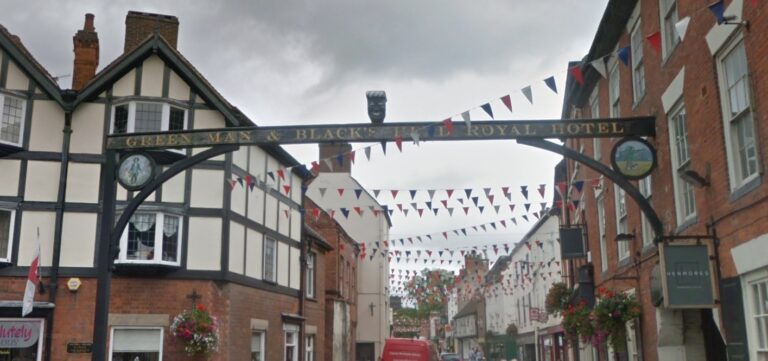A controversial sculpture is set to return to public display in Derbyshire five years after it was unlawfully removed, hidden by a councillor, and eventually stored in another town.
The Black’s Head sculpture, which formed part of a Grade-II*-listed sign above St John’s Street in Ashbourne, was removed by protesters in June 2020.
It was hidden by Cllr Stuart Lees – who is now Conservative Group leader on the district council – in his home for four days, before being returned to Derbyshire Dales District Council.
Since the incident, the head sculpture has been kept in Derbyshire County Council’s Matlock Records Office for five years “for safekeeping”.
Now the district council has filed plans for permission to house the head sculpture in Ashbourne Museum – Ashbourne Historical Centre – in a glass container alongside a display explaining the item’s history and the circumstances of its removal.
Documents submitted with the plans detail a brief summary of the events of the sculpture’s removal.
The planning documents state: “The current situation is that the head element was removed from the sign on 8th June 2020 by persons unknown without the consent of the district council in its capacity as owner of the sign or as local planning authority.
“The removal was at the time of heightened tensions nationally about statues and structures with an actual or alleged connection with the slave trade.
“After a period of time, the head was returned to the district council and was deposited at Derbyshire County Archives Office for safekeeping, where it currently remains.”
It details that the history of the sign and its connection with the slave trade is “inconclusive”.
The document continues: “It is considered that the return of the head to the sign in such a prominent position spanning the main A515 road through the centre of Ashbourne would not allow an explanation of the sign to be included as it might be with a statue in a public square.”
A small sign directing people to the museum would be placed on the bottom of the sign which once carried the sculpture in St John’s Street, if the plans are approved.
The people who removed the sculpture were photographed and filmed throughout the removal on June 8 and their identities were uncovered.
They were part of a group of around 150 campaigners who gathered to remove the sculpture.
Cllr Lees had been identified as hiding the sculpture in his home. There was “resistance” to the sculpture being kept safe in the district council’s Matlock headquarters which led to a four-day delay in it being returned by Cllr Lees between June 8-11.
The district council had agreed to remove the sculpture at 5am on June 9 to protect it from potential vandalism but before this could happen, at 9.43pm on June 8, protesters removed it, watched on by three district councillors and three town councillors.
Then council leader Cllr Garry Purdy had called district council chief executive Paul Wilson during the gathering of the crowd in St John’s Street, agreeing to remove the head “to defuse the situation and avoid the risk of damage to the sign”.
Cllr Thomas Donnelly, also district councillor for Ashbourne, arranged for the safe removal of the head alongside Cllr Lees, who, due to their joint background of firefighters are said to have overseen the secure positioning of ladders, the investigation had found.
Cllr Robert Archer had claimed the motive of the crowd was to stop the head “falling into the hands of its owner, the district council” and not to prevent it from being vandalised.
Steve Dunning, the council’s appointed independent person, who carried out the independent investigation for the council had found “no evidence of any direct threat at that time, from anyone to remove the head or threats of vandalism”, but had said “it was fair to assume” there was a “perception” of a potential risk to the head sculpture.
This had followed the toppling of other controversial monuments in England, such as the statue of Edward Colston, who played a key role in the slave trade, in Bristol.
More than 45,000 people signed a petition calling for the Black’s Head sculpture to be removed, with a counter-petition to “save” it gathering 4,000 signatures.
A cultural historian report carried out by two doctors at the University of Nottingham, on behalf of the council, submitted with the plans, concludes: “We conclude that the design of the Ashbourne Head is likely not derived from a specific individual but draws on wider racialised stereotypes of people of African descent in the 17th and 18th centuries, a period associated with British colonisation and transatlantic enslavement.
“We recommend that the Ashbourne Head is not reinstated in its former position in the streetscape of Ashbourne.
“The proposal that it is placed within a heritage or museum setting and appropriately interpreted would be in keeping with the evidence found.”





